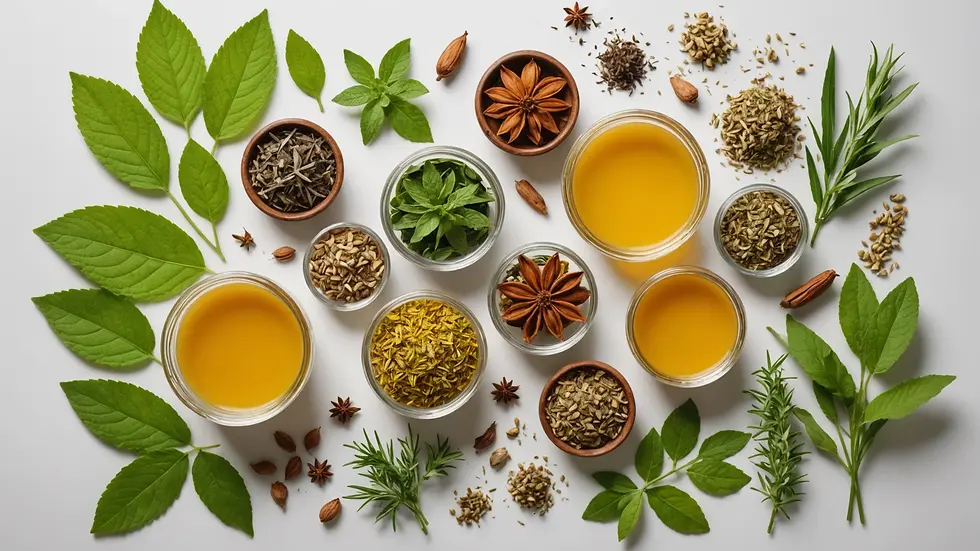
The art of using plants for healing has a rich history that stretches back thousands of years. Cultures around the globe, including the ancient Egyptians and the practitioners of traditional Chinese medicine, relied on these botanical concoctions to maintain health and wellness. Today, as more people seek natural alternatives to pharmaceutical treatments, the interest in ancient remedies is surging. This blog post takes you on an enlightening journey into the world of botanical concoctions from the past, examining their origins, uses, and the ways in which they can enhance modern living.
The Historical Significance of Botanical Remedies
Plants have been fundamental in the healing practices of numerous civilizations. For instance, the ancient Egyptians documented around 700 plant-based remedies in the Ebers Papyrus, including garlic, which they believed could ward off illnesses and bolster strength.
In traditional Chinese medicine, botanicals have been central to treatments for millennia. Through careful observation, various plants were systematically studied for their therapeutic effects. A prime example is ginseng, which has been appreciated for its role in enhancing energy and reducing fatigue. Research indicates that ginseng could improve energy levels by up to 20% in individuals suffering from chronic fatigue syndrome.
As modern society shifts back to natural wellness approaches, many are reconnecting with these ancient traditions to tap into the healing powers of plants.
Key Botanical Concoctions from Ancient Civilizations
1. Herbal Infusions
These simple yet effective remedies have been used since ancient times. Herbal infusions, made by steeping herbs in hot water, are a delightful way to promote health.
Chamomile: This flower has long been a favorite for its soothing effects on both the nervous system and digestive tract. Studies suggest it can improve sleep quality by up to 30%, making it a natural remedy for insomnia and anxiety.
Peppermint: This refreshing herb is well-known for easing digestive troubles and headaches. A study found that peppermint tea can significantly reduce digestive discomfort for nearly 70% of participants.
2. Ointments and Salves
Ancient cultures crafted ointments using infused plant oils to treat wounds and skin conditions.
Calendula: This vibrant flower possesses antibacterial and anti-inflammatory properties. Research shows that calendula ointments can speed up wound healing by up to 30% compared to standard treatments.
Comfrey: Known as "knitbone," comfrey ointment has been historically recognized for its ability to heal skin rapidly, especially bruises and sprains, with some studies indicating an improvement in recovery time.
Incorporating these herbal ointments into daily routines may offer simple solutions for minor skin issues.
3. Tinctures
Tinctures are concentrated herbal extracts made by soaking herbs in alcohol or vinegar. They are highly valued for their effectiveness.
Echinacea: Traditionally used by Native Americans, echinacea is known for its immune-boosting properties. Modern studies indicate it can reduce the duration of colds by up to 20%.
Goldenseal: This herb has gained popularity for its antimicrobial characteristics, supporting both digestive health and immune function.
Tinctures can provide an efficient way to bring potent plant benefits into everyday wellness practices.
Understanding the Science Behind Botanical Remedies
To appreciate ancient plant-based remedies, understanding the science behind them is crucial. Many active compounds in these plants have been extensively studied, revealing their positive effects.
Take turmeric, for example. Its active ingredient, curcumin, has drawn attention for its strong anti-inflammatory and antioxidant effects. Research indicates that curcumin can decrease inflammation by up to 45%, making it a powerful ally for those with chronic inflammatory conditions.
The blending of ancient wisdom and scientific research opens new avenues to explore the health benefits of botanical remedies.
Integration Into Modern Health Practices
The renewed interest in ancient remedies has inspired many to include these practices in their contemporary health routines. People are now more inclined to grow their own herbs, consult herbalists, and find natural remedies for common ailments.
DIY Botanical Concoctions
Creating your herbal products can be a fulfilling way to embrace nature.
Herbal Tea Blends: Mixing different herbs for unique teas can be both fun and healthful. For example, combining chamomile with lavender promotes relaxation, while mixing ginger with turmeric offers inflammation relief.
Homemade Salves: Crafting your own ointments with beeswax and infused oils addresses skin needs while tapping into your creative side.
By taking simple steps such as these, you can gain a deeper understanding and appreciation for the healing properties of plants.

Safety and Considerations
Exploring botanical remedies comes with responsibilities. Knowing the specifics about each herb is essential, as some can interact unfavorably with medications or have adverse effects.
Consulting with knowledgeable healthcare professionals about herbal medicine is a wise decision—especially if you have health conditions or are pregnant. Proper identification and sourcing of herbs are vital in ensuring they are pure and effective.
Accessing Botanical Knowledge
As interest in ancient remedies grows, many resources to learn more are increasingly available.
Herbalism Courses: Local gardens and organizations often offer workshops on herbal medicine and foraging. Participating in these can enhance knowledge and skills in this field.
Books and Online Resources: Numerous publications delve into medicinal plants and their uses. Notable texts include “The Herbal Medicine-Maker’s Handbook” by James Green and “Herbal Healing for Women” by Rosemary Gladstar.
Engaging with these materials can empower you to start your journey exploring botanical remedies.
A Journey Towards Natural Wellness
Rediscovering ancient botanical concoctions is an insightful endeavor that intertwines history, science, and personal well-being. As today’s society leans toward natural health practices, the significance of historical remedies remains vibrant.
By honoring the wisdom of those who came before us, we not only recognize the healing potential of plants but also cultivate a deeper bond with nature. Whether through herbal infusions, ointments, or tinctures, the possibilities for enhancing health and well-being are vast.
In a world shifting towards synthetic solutions, the revival of these ancient plant remedies presents a promising path forward that promotes balance and mindfulness. As you embark on this enlightening journey, remember to respect nature, prioritize safety, and cherish the knowledge that has stood the test of time.




Comments